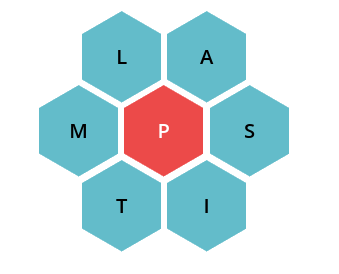

Solar Panel Price Update (24th September 2024): An In-Depth Analysis

As the world increasingly shifts towards renewable energy sources, solar energy has emerged as a leading contender in the global effort to reduce carbon emissions and combat climate change. Solar panels, the essential technology driving this renewable energy movement, have undergone significant price fluctuations over the years. As of 24th September 2024, the landscape of solar panel pricing continues to evolve due to various economic, technological, and political factors.
In this article, we will explore the latest updates on solar panel prices, the driving forces behind these changes, and what consumers, businesses, and governments can expect moving forward. We will also break down the different types of solar panels and how their costs vary, providing insights into the future trajectory of the solar industry.
The Current State of Solar Panel Prices in 2024
In 2024, the cost of solar panels has become more affordable for the average consumer compared to a decade ago. The price reductions have largely been driven by advances in manufacturing, economies of scale, and the rapid expansion of solar energy markets across the globe. As of September 2024, the average cost of solar panels in the United States is around $2.40 per watt for residential solar systems. This means that for an average 6kW (kilowatt) system, the total cost would be approximately $14,400 before tax credits or rebates.
However, it is important to note that solar panel prices vary greatly depending on several factors, including geographic location, type of panel, and installation costs. Prices can be lower in areas with more mature solar markets, like California or Germany, and higher in regions where solar energy infrastructure is less developed.
Factors Influencing Solar Panel Prices
1. Global Supply Chain Disruptions
One of the most significant factors affecting solar panel prices in 2024 is the disruption of global supply chains. The COVID-19 pandemic, followed by geopolitical tensions and trade restrictions, has caused interruptions in the production and transport of solar components, particularly silicon, a key material in solar panel manufacturing. These disruptions have led to increased material costs, which are being passed on to consumers.
For example, China, a major player in the solar panel supply chain, has seen factory shutdowns due to strict environmental regulations and energy shortages, which have impacted the production and export of solar components. These challenges have resulted in slightly higher solar panel prices in 2024 compared to the previous year.
2. Technological Advancements
While supply chain issues have increased some costs, technological innovations continue to drive prices downward in the long term. Solar panel efficiency has improved considerably, meaning that fewer panels are needed to generate the same amount of electricity as older models. Advances in manufacturing techniques, such as the use of perovskite materials and bifacial panels, are making solar technology more cost-effective.
In 2024, bifacial panels, which can capture sunlight from both sides, are becoming more popular due to their higher energy yields. Although bifacial panels are slightly more expensive than traditional monofacial panels, their ability to generate more electricity over time makes them a smart investment for many consumers.
3. Government Policies and Incentives
Government policies and incentives continue to play a crucial role in shaping solar panel prices. Many countries, including the United States, Germany, and China, offer tax credits, rebates, and subsidies to encourage the adoption of solar energy. In the U.S., the federal solar investment tax credit (ITC), which allows homeowners and businesses to deduct a percentage of the cost of installing a solar system from their federal taxes, remains a key driver of solar adoption in 2024.
As of 2024, the ITC stands at 22%, but there is growing pressure from environmental advocacy groups and industry stakeholders to extend or increase this incentive to accelerate the transition to renewable energy.
4. Market Competition
The growing competition among solar panel manufacturers has also contributed to the reduction in prices over time. Countries such as China, India, and the United States are home to several major players in the solar industry, leading to increased competition and innovation. In 2024, leading manufacturers like Trina Solar, JinkoSolar, and First Solar are pushing for cost-effective solutions to maintain their competitive edge, benefiting consumers by keeping prices competitive.
5. Labor and Installation Costs
While the price of the solar panels themselves has decreased, installation costs remain a significant portion of the total expense for consumers. Labor costs vary by region, and in areas where skilled labor is scarce, installation can be relatively expensive. In 2024, companies are exploring automation and technological solutions to reduce labor costs, such as robotic installation systems. However, these solutions are still in the early stages of adoption.
Types of Solar Panels and Their Costs in 2024
Not all solar panels are created equal, and the type of solar panel you choose will have a significant impact on the overall cost of your system. Here are the three most common types of solar panels available in 2024, along with their price ranges:
1. Monocrystalline Solar Panels
Monocrystalline solar panels are the most efficient and durable type of solar panel available today. They are made from a single, continuous crystal structure, which allows them to convert sunlight into electricity more efficiently than other types of panels. As a result, they are the most expensive option, with prices averaging between $2.50 and $3.50 per watt in 2024.
Due to their high efficiency, monocrystalline panels are often the best choice for homeowners with limited roof space who want to maximize their energy output. While they have a higher upfront cost, their long-term energy savings make them a popular choice for residential and commercial installations.
2. Polycrystalline Solar Panels
Polycrystalline solar panels are less expensive than monocrystalline panels, but they are also less efficient. They are made from multiple silicon crystals melted together, which makes them cheaper to produce. In 2024, polycrystalline panels cost between $2.20 and $2.80 per watt.
Polycrystalline panels are a good option for consumers with larger roof spaces who are looking for a more budget-friendly option. However, their lower efficiency means that more panels are required to generate the same amount of electricity as monocrystalline panels.
3. Thin-Film Solar Panels
Thin-film solar panels are the least expensive and least efficient option. They are made by depositing photovoltaic material onto a substrate like glass or plastic, which makes them lightweight and flexible. In 2024, thin-film panels cost between $1.70 and $2.50 per watt, making them an attractive option for large-scale commercial projects or installations where weight and flexibility are key considerations.
Despite their lower efficiency, thin-film solar panels are gaining traction in specific markets, particularly in industrial applications where space is not a constraint.
Regional Variations in Solar Panel Prices
The price of solar panels varies significantly depending on where you are located. In 2024, the global solar market is expanding rapidly, but regional differences in energy policy, labor costs, and market maturity result in varying price points. Here is a breakdown of solar panel prices in different regions as of September 2024:
1. United States
In the U.S., solar panel prices have stabilized after several years of decline. As mentioned earlier, the average cost of a residential solar system is around $2.40 per watt, with higher prices in states with less developed solar markets, such as the Midwest, and lower prices in solar-friendly states like California, Arizona, and Texas. Government incentives like the ITC continue to make solar energy an attractive option for U.S. consumers.
2. Europe
In Europe, solar panel prices vary by country, with Germany leading the way in terms of affordability and adoption. In Germany, the average price per watt is around €1.70 ($1.80), thanks to a well-established solar industry and strong government incentives. In contrast, prices in the U.K. and Southern European countries like Spain and Italy are slightly higher due to less mature markets and higher installation costs.
3. Asia
Asia, particularly China and India, has seen rapid growth in the solar industry. In China, solar panels are among the cheapest in the world, with prices as low as $1.50 per watt due to the country’s dominance in solar panel manufacturing. India, while slightly more expensive, is also experiencing a boom in solar installations, driven by government initiatives to increase renewable energy capacity.
The Future of Solar Panel Prices: What to Expect
Looking ahead, the future of solar panel prices remains optimistic. While short-term supply chain disruptions and material costs may cause slight price fluctuations, the long-term trend is expected to be downward as technology continues to improve and economies of scale take effect.
In 2024, innovations such as perovskite solar cells and integrated solar roofing systems are poised to disrupt the market further, potentially lowering costs and increasing efficiency even more. Additionally, as more countries commit to renewable energy targets, the demand for solar panels is expected to increase, driving further competition and price reductions.
Conclusion
As of 24th September 2024, solar panel prices are more accessible than ever, making solar energy an attractive option for homeowners, businesses, and governments alike. While supply chain challenges and regional variations can affect prices, the overall trend remains positive, with technological advancements and policy incentives driving the industry forward.
For consumers considering solar energy, now is a great time to invest, especially with continued government incentives and improving technology. The future of solar energy looks bright, and with continued innovation, prices are expected to become even more affordable in the coming years.















